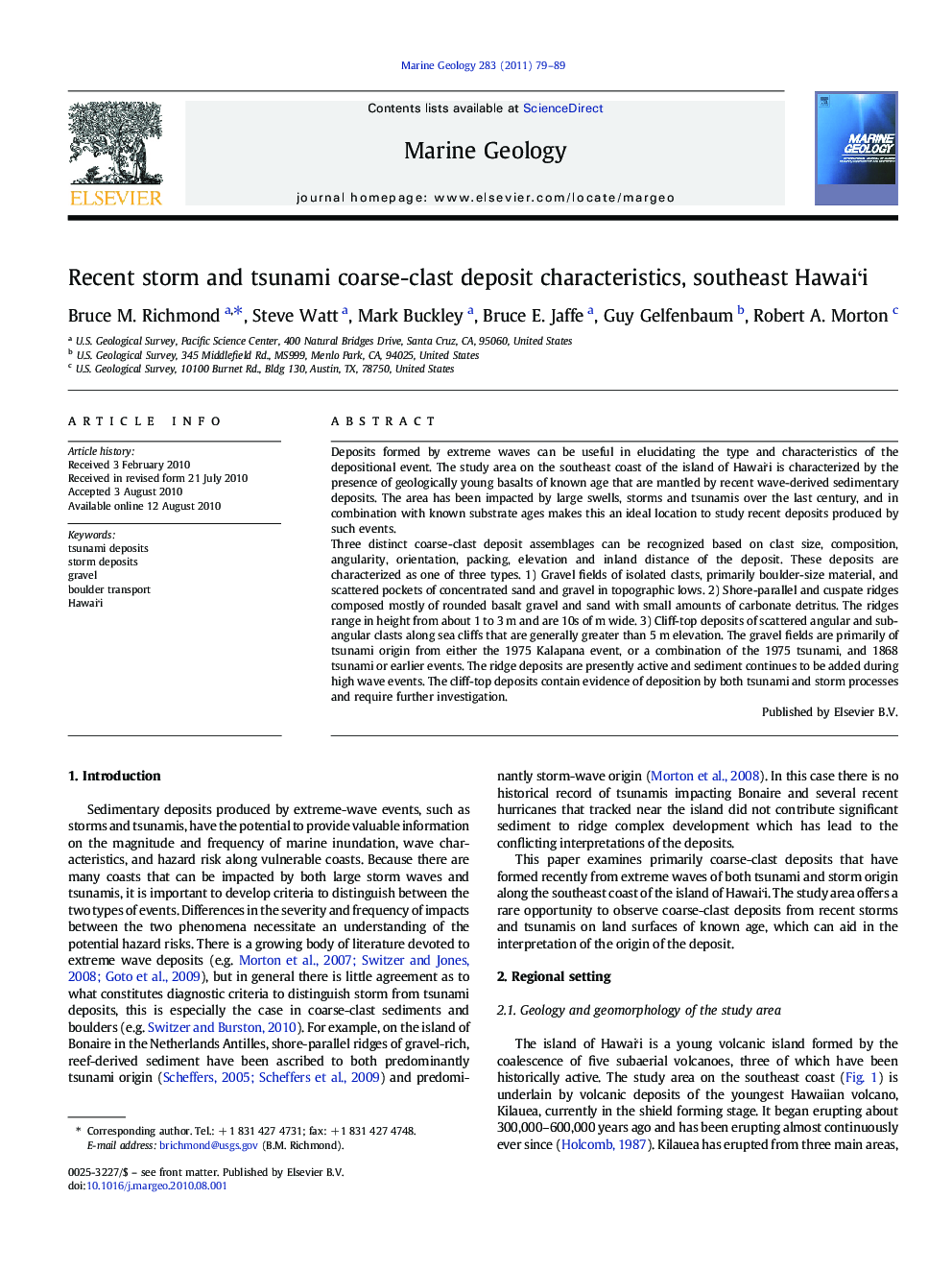| Article ID | Journal | Published Year | Pages | File Type |
|---|---|---|---|---|
| 4718728 | Marine Geology | 2011 | 11 Pages |
Deposits formed by extreme waves can be useful in elucidating the type and characteristics of the depositional event. The study area on the southeast coast of the island of Hawaiʻi is characterized by the presence of geologically young basalts of known age that are mantled by recent wave-derived sedimentary deposits. The area has been impacted by large swells, storms and tsunamis over the last century, and in combination with known substrate ages makes this an ideal location to study recent deposits produced by such events.Three distinct coarse-clast deposit assemblages can be recognized based on clast size, composition, angularity, orientation, packing, elevation and inland distance of the deposit. These deposits are characterized as one of three types. 1) Gravel fields of isolated clasts, primarily boulder-size material, and scattered pockets of concentrated sand and gravel in topographic lows. 2) Shore-parallel and cuspate ridges composed mostly of rounded basalt gravel and sand with small amounts of carbonate detritus. The ridges range in height from about 1 to 3 m and are 10s of m wide. 3) Cliff-top deposits of scattered angular and sub-angular clasts along sea cliffs that are generally greater than 5 m elevation. The gravel fields are primarily of tsunami origin from either the 1975 Kalapana event, or a combination of the 1975 tsunami, and 1868 tsunami or earlier events. The ridge deposits are presently active and sediment continues to be added during high wave events. The cliff-top deposits contain evidence of deposition by both tsunami and storm processes and require further investigation.
